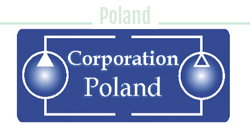
The CETOP Member Organisation Corporation Poland organize some Seminars during the Kielce Fair https://www.targikielce.pl/strona-glowna from 10 to 11 April.
The seminar will be organized as part of AUTOSTRADA New Infrastructure
(10-11.04.2024) Infrastructure Construction Expo AUTOSTRADA New Infrastructure
https://www.targikielce.pl/en/autostrada-new-infrastructure/programme-of-the-fair
You can downoad the programm here.
- Industry 4.0 technologies in hydraulic and pneumatic systems
The presentation concerns modern control and measurement concepts in hydraulic and pneumatic systems, as part of Industry 4.0, based on advanced technologies and integration with automation systems. In this concept, hydraulic and pneumatic drives are integrated with other advanced technologies, such as automation and electrical engineering, enabling the creation of comprehensive and efficient production systems. - Strength aspects of pistons in modern hydrostatic units
The presentation concerns the influence of piston design on the basic strength parameters of piston pumps. The design of the piston has a fundamental impact on the operational parameters of hydrostatic pumps and motors, which include: maximum continuous efficiency/absorption, maximum operating pressure, angular stiffness of the working system, and total moment of inertia of the moving elements of the working system. However, it directly affects leaks in its cylindrical part and in the hydrostatic bearing system, improving or worsening the tribological (operational) properties of the cam-bead-piston-cylinder system.
One of the most important design parameters of the piston is its stroke coefficient, which has a very large impact on the working volume of the pump/engine, and this parameter significantly affects the power to weight ratio of a given hydrostatic unit. The piston stroke coefficient also affects its tendency to buckle, which will be presented in examples. - Conception of experimental verification of the simulation model of “digital” hydraulics in multi-source hydrostatic drive systems
The aim of the presentation is to present the concept of building a real system to verify the correctness of the results obtained during simulation tests regarding the concept of “digital hydraulics”. At the stand, the effectiveness (efficiency) of using various methods of controlling the pump flow rate and hydraulic motor absorption in multi-source, hydrostatic drive systems will be checked. It is planned to compare different ways of changing the flow rate (absorption capacity) of hydrostatic units used in a multi-source drive system. Currently, the point is to compare a traditional hydrostatic system composed of multi-piston, axial hydrostatic units with a digital hydraulics system (constructed of gear pumps of various capacities), which allows for changing the liquid flow rate in the system. The concept of determining the control of a multi-source drive system for both cases remains the same. - Simulation model of a hydrostatic transmission prototype with oscillating energy flow.
The presentation include simulation tests of a prototype of a hydrostatic transmission with oscillatory energy flow in the Matlab Simulink (Simscape) environment, taking into account the wave propagation velocity. The element of the presented transmission is a linear piston pump, used in hydraulic systems where it is required to transform the reciprocating motion into hydraulic energy with a simultaneous unidirectional flow of the working fluid in the system. The pump is an element used to convert mechanical energy into hydraulic energy accumulated in the pumped liquid working medium used as its carrier. - Linear piston pump
The subject of the presentation is a linear piston pump protected by national patent application No. P.445 108, date of filing in the Polish Patent Office: June 2, 2023. The solution can be used in hydraulic systems where the transformation of reciprocating motion into hydraulic energy is required. with simultaneous unidirectional flow of the working fluid in the system. The presentation will include: the genesis and description of the invention, its principle of operation as well as its possible applications.
